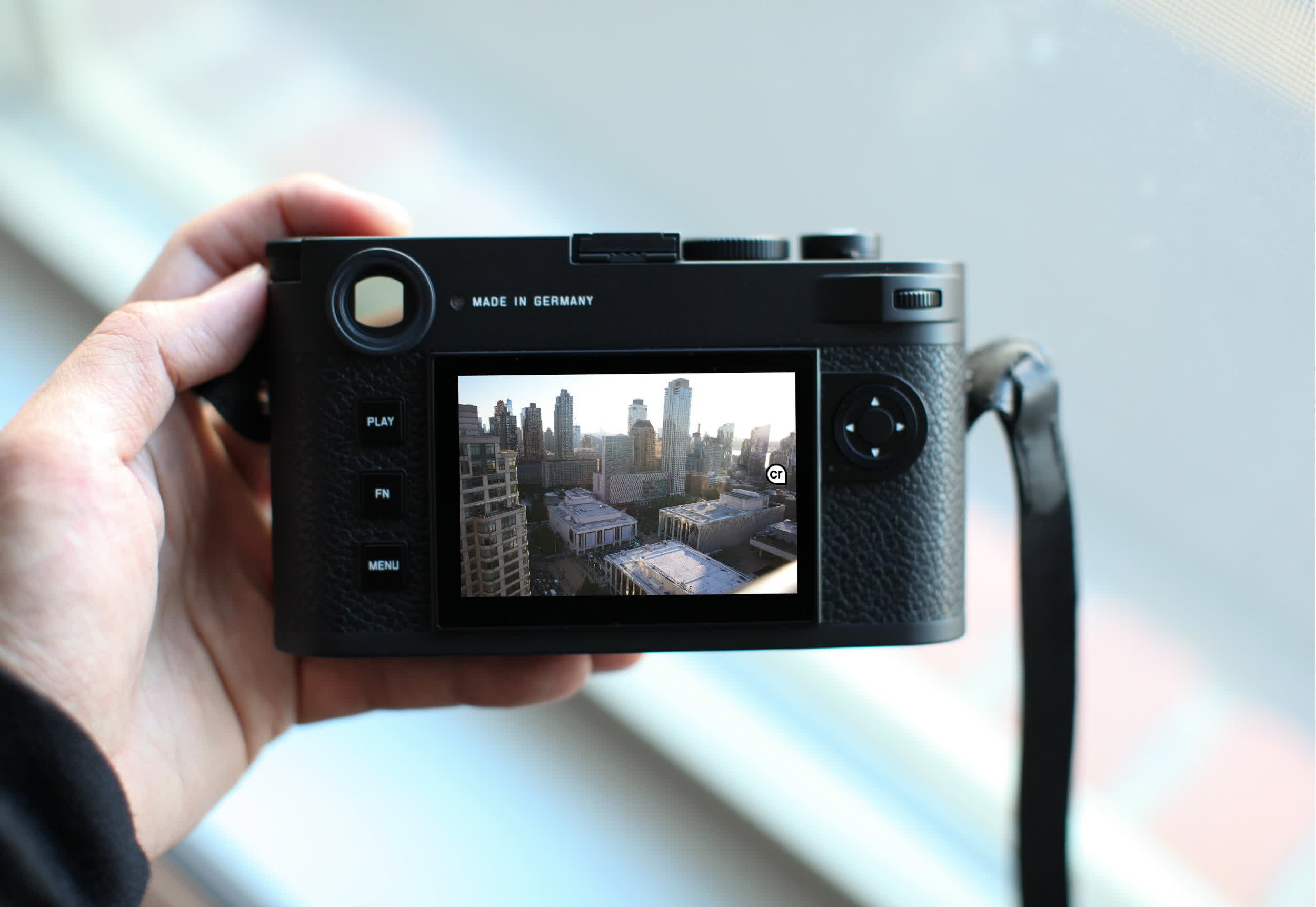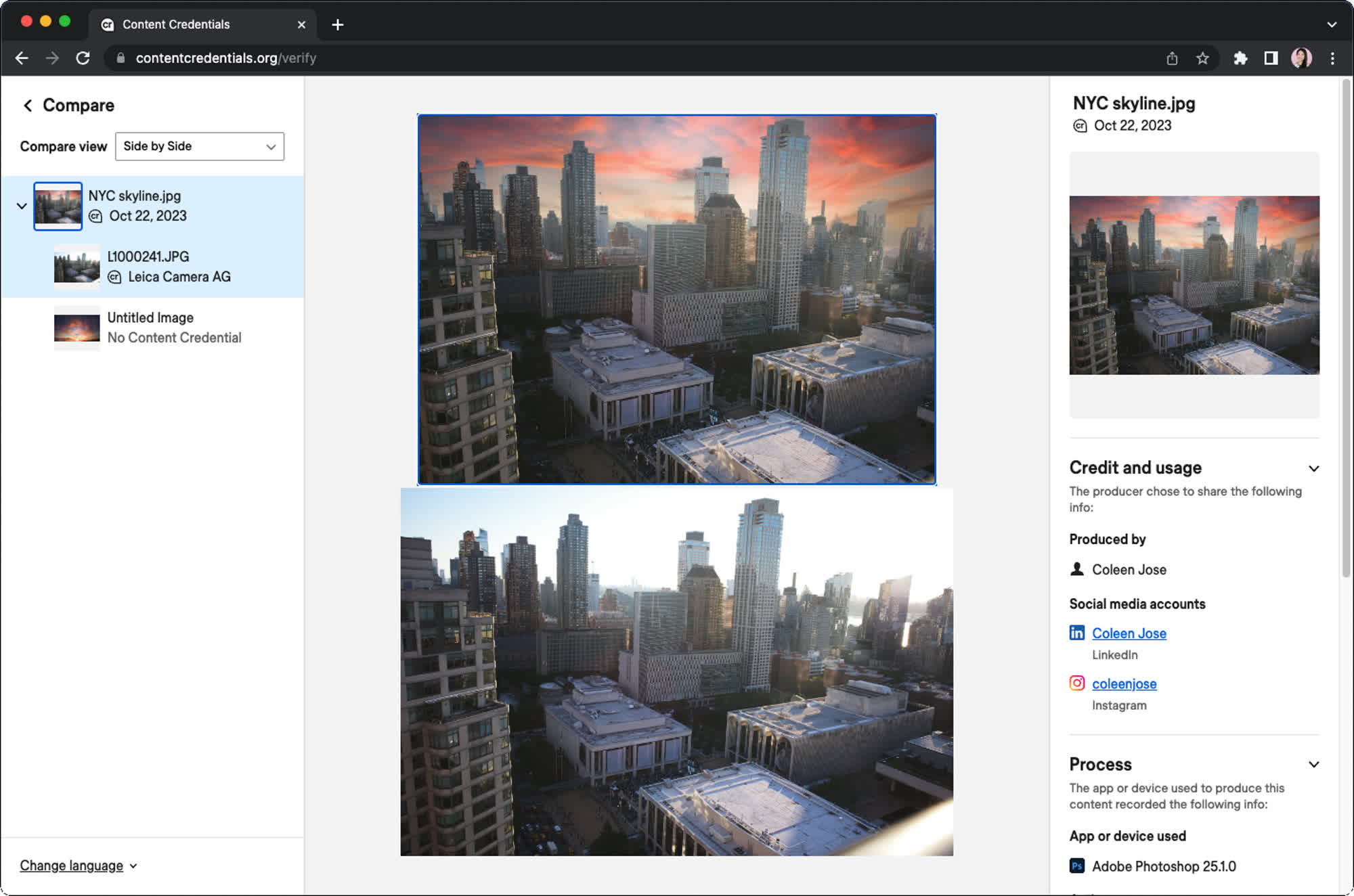Forward-looking: Despite the widespread availability of smartphones, dedicated camera manufacturers are not giving up. Leica is taking steps to modernize its high-end full-frame cameras, incorporating a security feature aimed at safeguarding the authenticity and ownership of photos in a world where AI-generated content poses challenges.

Leica has introducing the M11-P, the world's first camera capable of storing metadata in compliance with the Content Authenticity Initiative (CAI). This security feature, known as Content Credentials, is specifically designed to combat disinformation and uphold trust in digital content sources, according to CAI. Adobe, a co-founder of CAI, has already announced its support for Content Credentials through its Creative Cloud platform.
The Leica M11-P incorporates the Coalition for Content Provenance and Authenticity (C2PA) standard. This standard ensures that each photo is captured and stored along with secure, encrypted CC metadata. The CC system records essential information such as the camera manufacturer, model, the photographer, and the capture date for each image. Furthermore, each image is saved with a digital signature, allowing its authenticity to be verified through a CAI web service or the Leica FOTOS app.
CAI considers Leica's integration of the CC protection system a "watershed moment" in the photography industry. It provides professionals and users with a commercially viable method to protect their content. The CAI framework has the potential to combat both misinformation and disinformation, maintain trust in original sources, and possibly track every step in an image's editing history.

CC metadata appears to be robust enough to establish a chain of authenticity "from camera to cloud," CAI said. This empowers photographers to maintain "a degree of control" over their art, story, and context. Users can scrutinize an image's origin, determining its trustworthiness, while content creators can receive due credit for their photographic work.
In addition to C2PA standard support, the camera features 256GB of internal storage, a "Maestro III" processor for rapid image processing and data storage, and a USB-C port.
CAI reports that the CC system is experiencing "tremendous" momentum, attracting new members and fostering adoption. This momentum aligns with the organization's mission to preserve trust and transparency in the photography industry. However, if an image is edited using software that does not support CC's encrypted metadata, there may be gaps in the tracking of provenance data.
While CAI is optimistic about the CC system's efficacy and future prospects, it may primarily serve a professional audience or affluent photography enthusiasts. The Leica M11-P commands a hefty price tag of $9,195.00.
https://www.techspot.com/news/100671-leica-m11-p-first-full-frame-camera-built.html